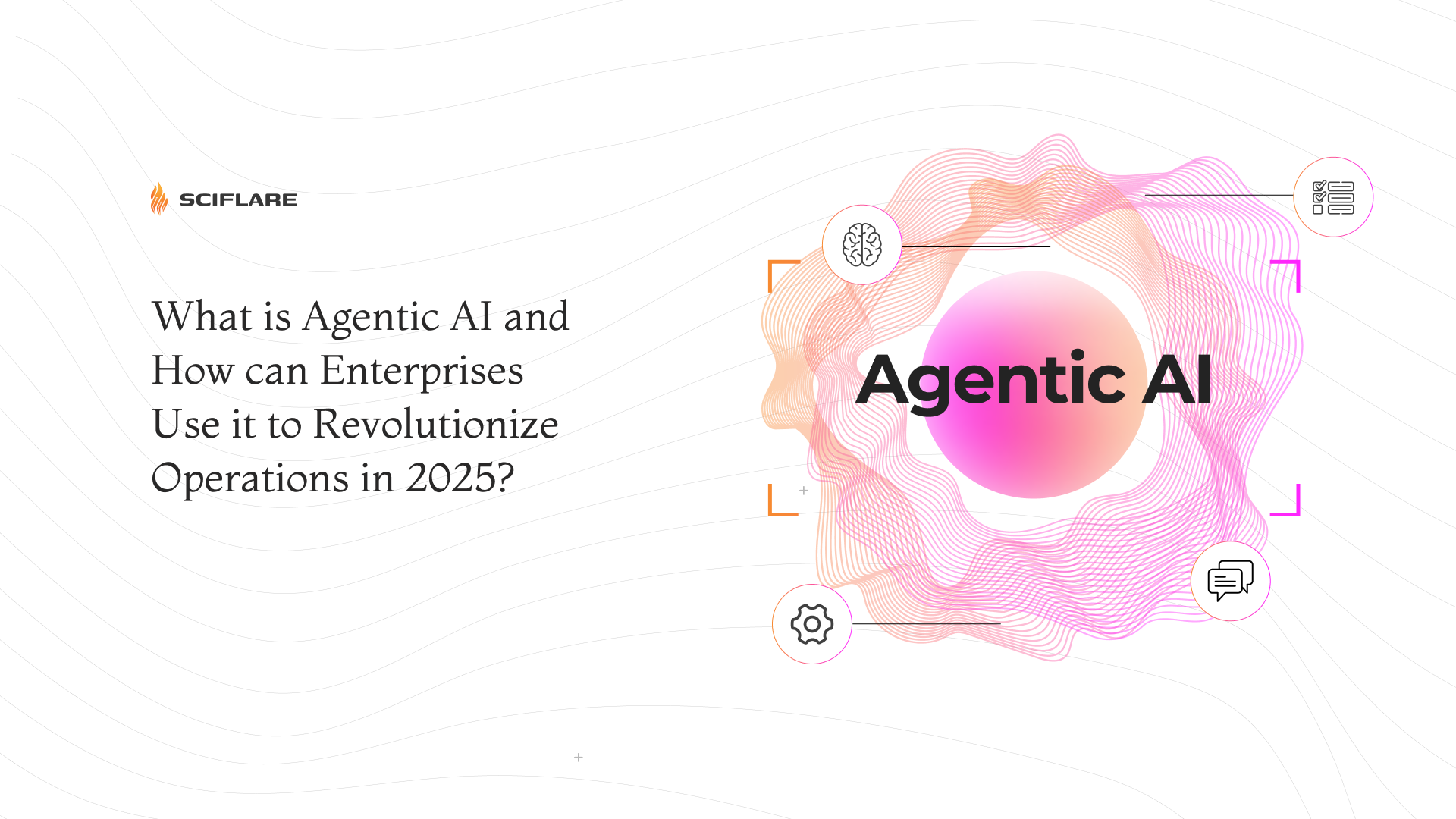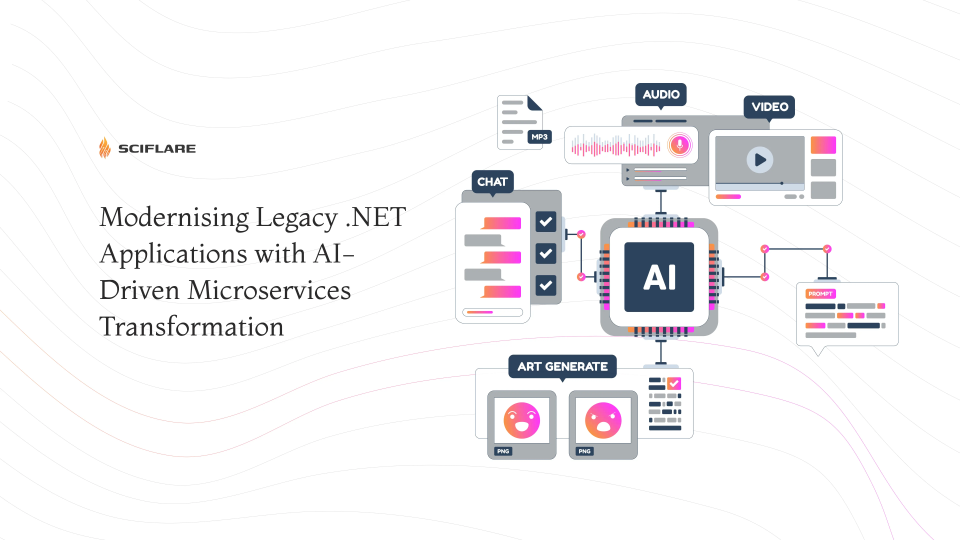
Which Java Framework is Best for Backend Development?
Written by: Shiva kumaran S
Quick Summary
Java backend frameworks simplify and accelerate developing secure, high-performing, and scalable applications by enabling developers to focus on business logic.
Determining which Java framework is best for backend development necessitates a careful evaluation of project needs.
Introduction
Java is one of the most versatile and popularly used programming languages across a variety of project use cases. Nearly all startups and enterprises hire Java developers to leverage its platform independence, object-oriented programming, high-performance, open-source nature, and robust security. However, using the right Java framework determines project success as technology meets business and user needs. This blog will help you understand different Java frameworks for backend development, identify which Java framework is best for each use case, and hire specialized expertise tailored to your project needs.
What is Java Framework Architecture?
The Java framework architecture refers to a structured design or blueprint for different components within a framework to interact while building an application. The set of rules, pre-built modules, integration patterns, and reusable code offer developers a stable foundation for developing applications without having to rebuild every component from scratch each time.
While specific frameworks will vary, some core components and architectural patterns are crucial for Java applications to function seamlessly on every platform. These have been discussed below:
1) Java Development Kit (JDK)
This is the complete software development kit (including the Java Runtime Environment) and other tools required to build Java applications.
2) Java Virtual Machine (JVM)
This facilitates Java’s platform independence to help businesses “Write Once Run Anywhere”. The JVM is the runtime environment that executes the Java bytecode, takes care of memory management, and garbage collection.
3) Java Runtime Environment (JRE)
This includes the JVM, standard files, and class libraries necessary for running Java application.
Now, let us look at the different Java frameworks based on use cases, backend development nuances, and purposes.
What is the Best Java Framework for Backend?
Java backend frameworks help developers build, maintain, and scale server-side applications with ready-made components, enable them to focus on business logic, and provide a structured, robust, and stable foundation for building scalable backends faster and reliably. These frameworks simplify major backend tasks like error handling, server logic, database interactions, API creation, security measures implementation, and so on. Discussed below are some of the most popular backend frameworks, which will help you identify the right expertise to hire for your project needs:
1) Hire Spring Boot Developers
The Spring framework enables the development of scalable web applications by providing Spring MVC. However, these applications require time-consuming configurations, which can be challenging for new developers to get the application production-ready. The Spring Boot framework addresses this problem by enabling developers to directly focus on the logic without worrying about the setup and configuration. Its production-ready environment accelerates the development of standalone applications that “just run”. It is built on top of the Spring framework and includes all its comprehensive features.
The main benefits of hiring Spring Boot developers include:
Elimination of manual configuration: Spring Boot offers automatic configuration of common beans depending on the libraries required for your project.
Production-ready features: Spring Boot developers can use its production-ready features, such as, externalized configuration, which enables businesses to minimize operational risks, deploy faster, and scale seamlessly while adapting their apps across environments without major code changes. Features like health checks reduce the application’s downtime by enabling real-time monitoring for immediate detection of issues.
Rapid application development: SaaS providers and enterprises looking to reduce their time-to-market with faster prototyping for scalable solutions benefit from hiring Spring Boot developers as they can leverage its auto-configuration, starter dependencies, and embedded servers to eliminate repetitive setup requirements.
Use cases for the Spring Boot Framework include:
Microservices development with minimal configuration
RESTful API development for high-performing integrations
Enterprise application development for reliable support for large-scale systems
Deploying cloud-native applications seamlessly
Developing applications for e-commerce, banking, SaaS, and other high-growth industries where scalability, rapid deployment, and cloud-ready infrastructure readiness is essential.
2) Hire Hibernate Developers
If your business relies on complex data handling and scalability, Hibernate is the best framework for you. It offers Object Relational Mapping (ORM) to simplify interactions with relational databases, acting as a bridge between the databases and Java applications. As such, it eliminates the need for developers to write complex SQL queries and enables them to directly work with Java objects. It maps Java objects to database tables and Java data types to SQL data types, enabling developers to perform CRUD operations with Hibernate APIs or Hibernate Query Language.
The main benefits of using the Hibernate framework include:
Ease of database portability as opposed to the lack of portability in JDBC code
Minimizing boilerplate code, or repetitive code for each project, which compromises readability
Simplified code with no complexity arising from mandatory exception handling necessary for JDBC code.
If you are wondering which Java framework is best, Hibernate may be your answer for the following use cases:
Enterprise application development to manage complex relationships in large scale CRMs.
Applications that are database-driven by mapping Java objects directly to database tables.
Applications requiring large scale data imports leveraging the framework’s persistence context.
Cross-platform application development with Hibernate’s database independence.
E-commerce, banking, financial services, SaaS, and all other applications reliant on heavy transactional volume and seamless scalability.
3) Hire Struts Developers
The Apache Software Foundation developed the open-source web application framework, Struts. It facilitates backend development with its MVC architecture adherence, Controller implementation through action classes, and separation of concerns between the presentation logic and business logic. These features and capabilities simplify the development and maintenance of large-scale web applications.
The main benefits of using Struts include:
Helpful features for backend development: Struts includes features like input validation, which minimizes errors and prevents system vulnerabilities by ensuring only secure and reliable data enters the system, and internalization, which helps enterprises cater to global users while maintaining a unified backend for applications that adapt to multiple languages and regions.
Focus on core business logic with MVC adherence: The Struts MVC separates the business logic, presentation logic, and control flow, making it easier to maintain and scale applications. It helps developers focus on business logic by eliminating concerns for repetitive infrastructure code through managing tasks like response mapping, form handling, and request routing.
Integration with J2EE: Struts integrates seamlessly with J2EE, combining the strengths of a structured MVC framework, J2EE services including JSP, JDBC, and servlets to build scalable and secure enterprise applications. Hire J2EE developers to grow and scale your enterprise applications.
Use cases for the Struts framework include:
Large-scale enterprise web app development for ERP, HR, and CRM systems.
Multi-language application development for global audiences.
Legacy modernization of old enterprise systems for better maintainability.
Utility and telecom service application with long service workflows, public sector systems requiring long-term maintenance, banking, and e-commerce apps to manage end-to-end workflows with ease.
4) Hire Vertx. Developers
Vertx offers a powerful choice for backend development with its reactive, event-driven, and non-blocking framework. Its microservices architecture enables modularity and is suitable for developing independent, scalable applications. Its event-driven and non-blocking architecture makes it a perfect choice for applications which require low latency and high concurrency, such as, real-time chat and gaming applications. As such, Vertx. Offers a strong foundation for building resilient, responsive, and reactive applications by facilitating efficient real-time data processing and minimal resource consumption.
The main benefits of using Vert.x include:
Support for real-time applications: The event-driven model of Vert.x is perfect for developing real-time applications, enabling events and messages to flow between components without the limitation of blocking calls. Additionally, Vert.x supports low-latency event loops, which enables developers to update users in real-time by processing incoming data instantly.
High concurrency: As opposed to traditional Java framework with a “one-thread-per-request" model, Vert.x offers a non-blocking I/O model with event loops, enabling a small number of threads to manage extensive concurrent requests. As such, Vert.x can continue processing requests without waiting for operations.
Microservices architecture: Vert.x is polyglot, lightweight, and modular, facilitating breaking the application into smaller and independent services that use event buses or APIs for communication. This allows each Vert.x instance to run an isolated service with minimal overhead.
Use cases for the Vert.x framework (Vert.x can be used as a toolkit and framework) include:
Developing real-time applications, such as messaging, chat, and gaming apps.
Developing IoT systems by collecting data from multiple devices simultaneously.
High concurrency APIs for ticket booking, ride-hailing, and payment platforms.
Live sports scoreboards with instant data processing.
E-commerce applications with distributed architectures.
Sciflare’s Expertise: How we used Java Vert.x for Dream 11 to Scale from 0-5.5 million users
Sciflare was the solution partner for Dream 11’s Manager Mode, a free-to-play fantasy cricket feature with which users can manage a single team for an entire series. Real-time engagement being crucial for this project with millions of concurrent users, high concurrency with low latency was non-negotiable to reflect every player action on the leaderboard instantly.
We leveraged Vert.x to build an event-driven architecture for Manager Mode. Its concurrent and non-blocking model allowed us to efficiently process large volumes of user requests in real time. It gave us the flexibility and performance quality required for seamless gameplay. This led to the following desirable outcomes for our client, Dream 11:
Support 500k+ RPM (Request per minute) concurrent users with response times under 50ms.
A robust platform capable of scaling to a user base of 5.5 million.
Zero downtime during critical match hours.
A smooth, lag-free user experience during peak match hours.
Want to offer lag-free performance at scale like Dream 11?
Get in touch with us to hire Vert.x developers and scale effortlessly with systems that grow with your business!
Conclusion
Choosing which Java framework is best for backend development needs a careful evaluation of your business goals, user needs, and specific project requirements. This is necessary for aligning technology with your business needs to develop applications that engage and retain users at scale, offer them consistent experiences, and manage peak loads efficiently, offering a robust foundation to your offerings to users in a competitive environment. We have been enabling enterprises across the globe find the right expertise for their backend development for over a decade. Get in touch with us now to hire Java developers with top-tier technical expertise to build applications that grow with your business.
For java developers hiring guide, read - Guide To Hiring Java Developers
FAQs
1) Quarkus vs Spring Boot: which is better?
Quarkus is ideal for microservices and serverless deployments and facilitates fast setup and low memory footprint for containerized and cloud native environments. As such, it offers a promising solution for modern and cloud-optimized backends, whereas Spring Boot supports complex integrations for enterprises looking for stable performance, rich integrations, and long-term support.
2) What is Java framework used for?
Java frameworks offer developers reusable code, pre-built structures, and standard best practices to accelerate the development of secure, reliable, and scalable applications without having to build every component from scratch each time.
3) What are the most widely used Java frameworks for backend development?
Some of the most commonly used and reliable Java frameworks for backend development include:
Spring Boot – Ideal for rapid development, microservices, and enterprise applications.
Hibernate – Best for applications with complex data models and database interaction.
Struts – Suitable for large-scale enterprise applications following the MVC architecture.
Vert.x – A top choice for real-time, event-driven, high-concurrency applications.
Quarkus – Great for cloud-native, serverless, and containerized environments.




